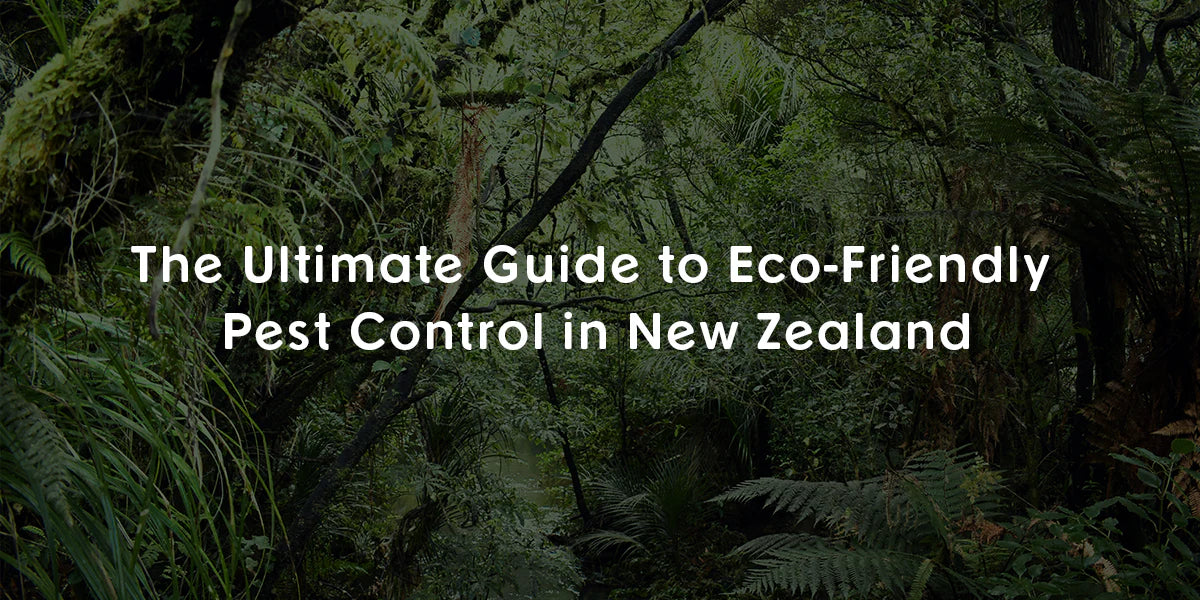The Ultimate Guide to Eco-Friendly Pest Control in New Zealand

In the land of Aotearoa, where the natural landscape whispers tales of ancient times and the wildlife sings the songs of the earth, the guardianship of our environment is not just a responsibility but a duty.
To guard our realm, we must wield the shield of knowledge and the sword of sustainability.
This guide is your shield and sword in the quest for eco-friendly pest control in New Zealand.
Understanding the Lay of the Land
The first step in eco-friendly pest control is understanding the unique biodiversity of New Zealand.
Our land is home to some of the most distinctive flora and fauna on the planet, many of which are found nowhere else in the world. This isolation has also made our native species particularly vulnerable to pests.
Invasive species such as rats, stoats, and possums pose a significant threat, not just to our wildlife but to our agriculture and homes.
The Eco-Viking’s Arsenal: Non-Toxic Solutions
The heart of environmentally friendly pest control lies in non-toxic solutions that protect without harm. These methods ensure the safety of our livestock, children, and pets while also preserving the natural balance of our ecosystems.
Bait Stations and Traps: Designed to target pests with precision, modern bait stations and traps are engineered to be safe around non-target species. They're the stealthy warriors in the battle against pests, ensuring our homes and farms are protected.
Natural Repellents: Nature's own defences can be potent weapons. From peppermint oil to neem, natural repellents keep pests at bay without introducing harmful chemicals into our environment. Are there any specific ingredients in your products that you want to mention here instead or as well? We can include how they work.
Crop Rotation: Rotating crops can prevent the buildup of pests associated with a specific plant. Different plants can break the life cycle of pests, reducing their numbers naturally.
Companion Planting: Growing certain plants together can naturally repel pests. For example, marigolds are known to repel nematodes and other garden pests, while garlic and chives can deter aphids when planted near roses or fruit trees.
Sanitation: Keeping the area clean by removing debris, fallen leaves, and weeds can significantly reduce pest habitats. Regularly clearing out potential breeding sites minimises the chances for pests to establish a foothold.
Soil Health: Maintaining healthy soil through organic matter addition, proper pH balance, and adequate moisture can encourage strong plant growth, making them less susceptible to pests. Healthy plants are naturally more resilient against pest attacks.
Water Management: Overwatering can lead to pest problems, such as root rot and fungal diseases, which attract certain pests. Proper irrigation techniques can help avoid excess moisture and deter pest infestations.
Timely Harvesting: Harvesting crops at the right time can prevent pests from feeding on the produce. Overripe or rotting fruits and vegetables attract pests, so removing them promptly can reduce pest interest.
Fortifying the Homestead: Home and Industrial Strategies
A well-guarded property is a fortress of peace. Protecting our homes and industrial spaces requires vigilance and strategy and reminds us that prevention is key.
Regular Maintenance: Keep invaders out by sealing cracks, managing waste properly, and ensuring food sources are secure. It's the equivalent of keeping your gates locked and your walls strong.
Plant-Based Barriers: Certain plants are natural deterrents for pests. Planting them around your home or industrial space creates a green moat that’s both beautiful and protective.
Physical Barriers: Using netting, row covers, or fences can physically prevent pests from reaching plants. This method is particularly effective for larger pests, such as birds or mammals, and can also protect against insect invasions.
Education and Awareness: Understanding the pests you're dealing with and their habits can significantly improve control measures. Knowledge empowers us to make informed decisions and choose the most effective, least harmful methods.
The Fields of Valor: Farming Practices
On the farms where the land feeds us, pest control is a matter of sustenance and survival. Eco-friendly practices here support not just the farm's health but the entire ecosystem's well-being.
Integrated Pest Management (IPM): This approach combines biological, cultural, physical, and chemical tools to minimise economic, health, and environmental risks. It's about using the right tool at the right time, much like a skilled warrior in battle.
Crop Rotation and Polyculture: Diversifying crops and rotating them helps break pest cycles naturally. This strategy not only combats pests but also enriches the soil.
Habitat Management: Creating environments that attract pest predators is a way to harness the natural ecosystem for protection. It's like having your own army of guardians, each specialised in their form of defence.
The Path Forward
As we practice eco-friendly pest control, we follow in the footsteps of our ancestors, who understood the sacred balance of nature. To protect our land, we must respect its laws and creatures, for they are the true keepers of our future.
The journey towards sustainable pest control is ongoing and requires our collective effort and dedication. By choosing non-toxic methods, we not only safeguard our immediate environment but also contribute to the global effort to preserve our planet for future generations.
Eco-friendly pest control in New Zealand is not just a practice but a philosophy.
It is a commitment to living in harmony with nature, protecting our homes, farms, and industries without compromising the health of our planet. As guardians of this beautiful land, let us wield our knowledge and innovation with wisdom and courage, ensuring Aotearoa remains a haven for all its inhabitants.
Join us at Viking Pests as we lead the charge towards a greener, safer New Zealand. Together, we are invincible.






